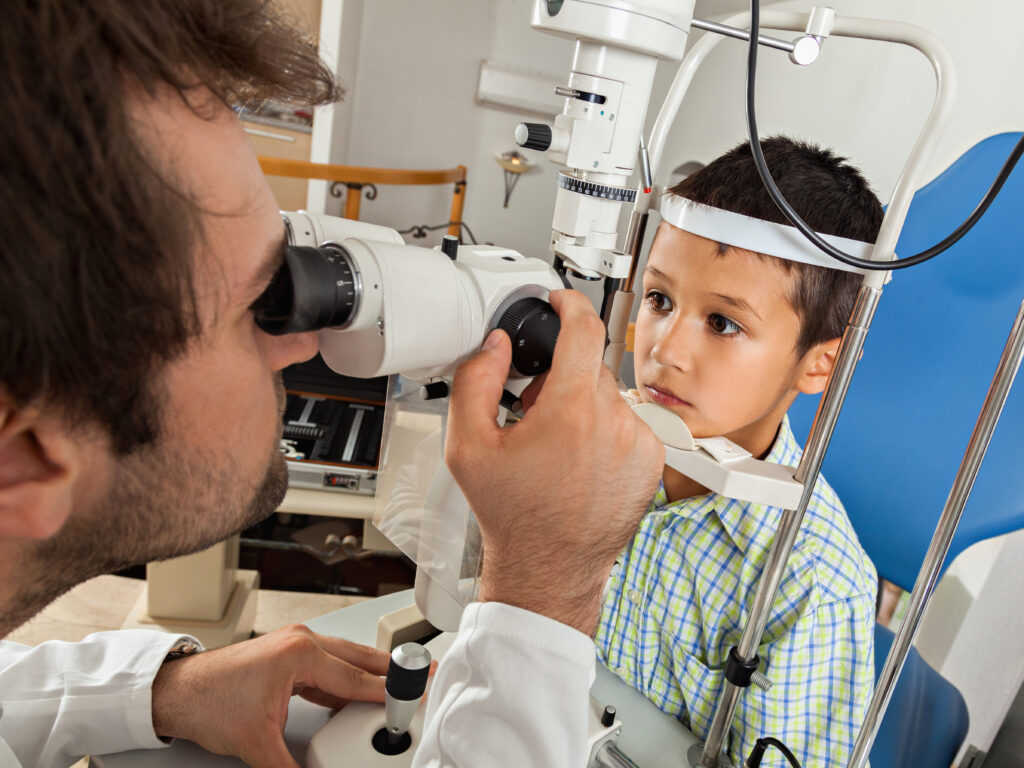Healthy vision in children: how to detect the most common diseases
Visual health is key since a newborn’s first days. And the ailments, detected early, can change the quality of life of the child. When and why to consult.

Although vision problems begin when people enter old age, good eye health is key to every child’s life. And it is the parents responsibility to detect any ailment and immediately consult with professionals. Healthy eyesight is key to the good development and learning of every child.
It is very important to consider eye examinations as part of the child’s comprehensive care routine since birth. Especially if it has been premature or if there is a family history with vision problems.
During the first year of life, your family pediatrician should schedule regular check-ups and it is also advisable to see a vision specialist, an ophthalmologist.
General control of visual acuity is necessary when the child is around three years and another at five. They are going to begin their school journey in school and it´s key that they can see clearly to have a profitable education and that poor vision does not cause them to fall behind in their tasks and learning.
From that age, the exams should be frequent, at least annually. It is important to observe for any symptoms: the most common is a headache while in class. Teachers are a key figure in detecting any abnormality, especially if it is difficult for them to see the blackboard or have difficulty reading.
The most common vision problems can be:
Amblyopia (“lazy eye”) is poor eyesight in an apparently normal eye. Two common causes of this disorder are strabismus, which is an incorrect alignment of the eyes. If left untreated, amblyopia can cause irreversible vision loss in the affected eye. This should be treated before the child turns 8 years old. It can be corrected by covering the well-aligned eye so that the other is forced to function normally, with special glasses or even surgical interventions.
Refractive errors. In these types of errors, the shape of the eye does not refract light (change its direction) correctly, so that the images are perceived as blurry. Refractive errors can also cause amblyopia. The most common type of refractive error in school-age children is myopia; Other types of refractive errors are hyperopia and astigmatism:
Nearsightedness is the poor seeing of distant or distant objects and is usually treated with glasses or prescription contact lenses.
Farsightedness is a poor vision of nearby objects and is usually treated with glasses or prescription contact lenses.
Astigmatism is an imperfection in the curvature of the anterior surface of the eye; If it causes blurred vision or other discomforts, it is usually treated with glasses.
There is also retinopathy of prematurity that affects babies who do not come to term and it must be treated immediately.
Others have to do with a family medical history:
Retinoblastoma is a malignant tumor that usually appears during the first three years of life. The affected eye (s) may have a visual loss, and the pupils turn white.
Neonatal cataracts occur in some newborns. A cataract is a clouding of the lens of the eye.
Congenital glaucoma is a very rare condition in infants and can be inherited. It is caused by high ocular pressure due to incorrect or incomplete development of the ocular drainage ducts before birth; It can be treated with medicine or an operation.
Remember to pay attention to any signs your child may have: red eyes, watery eyes, often rubbing, getting too close to the TV, and having learning difficulties. It is important to go to an expert to solve the problem since sight can be corrected: any child can wear glasses, and with proper medical follow-up, their sight and, of course their life can change radically and for the better.
Resources
Vision to Learn
12100 Wilshire Boulevard
Suite 1275
Los Angeles, CA 90025
+1 (800) 485-9196
Angels For Sight | Better Vision for a Brighter Future
920 North Alameda Street
Compton, California 90221
Phone: 310-537-2102
Pediatric Care – QueensCare Health Centers
4816 East 3rd Street
East Los Angeles, CA 90022
HEALTH CENTERS HOURS: Monday – Friday 8 AM – 5:30 PM. Saturday: 8:30AM – 1PM
Phone: (323) 635-1140
Pediatric Care in Los Angeles – CCCHC
2928 E. Cesar Chavez Ave. Los Angeles, CA. 90033
Mon – Fri: 9AM – 5:30PM | Sat: 9AM – 3:00PM
Phone (323) 266-6700
You can also find more trusted local services in your community at http://boyleheightsresources.org/ or download the Boyle Heights Resources app.